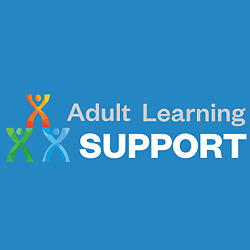
Putting the Story on Screen: Digitally Supported Reading for Adult Learners
Status
Completed: 6 November 2012
Project Details
The project, completed in 2012, to create a Digitally Supported Literacy (DSL) resource for adult literacy learners using digital media to create an on-screen reading experience with embedded learning support. A collaboration of Adult Learning Support Nelson Inc (ALS) and the University of Waikato.
Aims:
The main aims of the project were to:
- produce an adult learning resource that worked, that was based on research and that was easy to use
- make, at a technical level, the on-screen resource easy to read
- incorporate reading aids that were of minimal distraction to the reader.
Methodology:
The methodology of the project involved:
- the initial three stages of selecting stories, recording the stories, and creating supplementary materials
- testing (validating) the stories on students
- choosing the final production style
- creating and sharing the final product.
Team

Brendyn Montgomery
Project Leader
Adult Learning Support Nelson Inc (ALS)
Jan Blythe
Adult Learning Support Nelson Inc (ALS)
Susan Bruce
Adult Learning Support Nelson Inc (ALS)
Caroline Budge
Adult Learning Support Nelson Inc (ALS)
David Whitehead
The University of WaikatoStatus
Funding
$9,950.00 (excl GST)
Key Findings
The key findings of the project that lead to changes in the resources included:
- The use of questions: questions were removed from the 120-wpm version of the resource and they were printed in the Tutor’s Manual and signalled opportunities to ask questions using an icon; a version of the a 150-wpm version included questions, which appeared before learners read a chunk of text, and gave learners a purpose for reading and an opportunity for tutors to test comprehension; and a version of the 150-wpm resource that had no questions, bullet cursor or hoops was developed.
- The use of an arrow cursor: responses from tutors prompted a trial of a cursor that first faded and reappeared against the next line. Learners were insensitive to this change but did comment that the cursor was intrusive. Therefore, the arrow cursor was changed to a bullet line indicator the same colour and opacity as the hoop lines. This resulted in a less intrusive line indicator, but the learners’ eyes were still sensitive to the movement of the line indicator.
- The use of hoops: tutors and less able readers appreciated the supportive function of the hoops and this feature was retained as a component of the resource.
- Tutor professionalism: a version of the resource that indicated locations were tutors might ask questions and that would provide tutors with opportunities to decide whether the use of questions was appropriate to the learner and the learning session was developed. The option of asking any other questions the tutor deemed appropriate was indicated in the Tutor’s Manual.
Key Recommendations
The key recommendation and insight from the project was:
Beliefs underpinning the development of the resources | A number of beliefs underpinned the development of the resources. These beliefs were that: learners should take responsibility for their own learning; given the diverse needs of learners, there should be options available to meet those needs; tutors should be given the professional responsibility to decide what was best for each learner; and the resource should have maximum flexibility in respect to how it might be used.
A research report prepared by Susan Bruce, Brendyn Montgomery, Jan Blythe, David Whitehead and Caroline Budge.
(PDF, 1.6MB, 15-pages).
- 13 May 2012